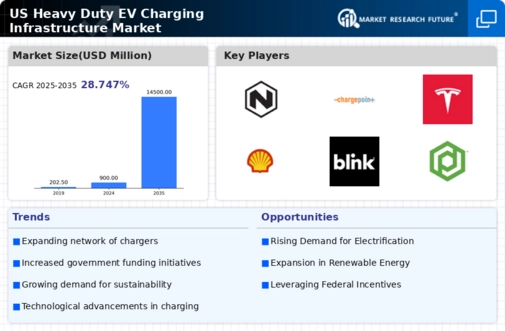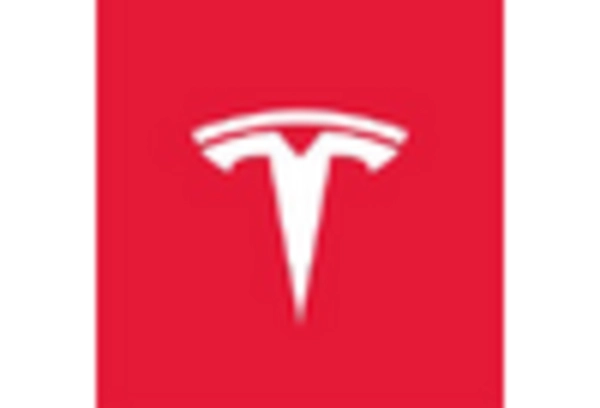Government Incentives and Funding
The heavy duty-ev-charging-infrastructure market is experiencing a surge in government incentives and funding aimed at promoting electric vehicle adoption. Federal and state governments are allocating substantial budgets to support the development of charging infrastructure. For instance, the Infrastructure Investment and Jobs Act has earmarked $7.5 billion for EV charging stations, which is likely to enhance the deployment of heavy-duty charging solutions. This financial backing not only reduces the initial investment burden on private companies but also encourages public-private partnerships. As a result, the market is poised for growth, with an expected increase in charging stations across highways and urban areas, facilitating the transition to electric heavy-duty vehicles.
Corporate Sustainability Initiatives
The heavy duty-ev-charging-infrastructure market is increasingly influenced by corporate sustainability initiatives. Many large corporations are committing to ambitious sustainability targets, which often include transitioning their logistics and transportation fleets to electric vehicles. This shift is driven by both regulatory pressures and consumer demand for environmentally responsible practices. As corporations invest in electric fleets, the demand for charging infrastructure is expected to rise significantly. Reports indicate that companies are planning to invest over $100 billion in electric vehicle infrastructure by 2030, which will likely bolster the heavy duty-ev-charging-infrastructure market. This trend reflects a broader commitment to sustainability and could reshape the logistics landscape.
Rising Demand for Sustainable Logistics
The heavy duty-ev-charging-infrastructure market is driven by the increasing demand for sustainable logistics solutions. Companies are under pressure to reduce their carbon footprints, leading to a shift towards electric heavy-duty vehicles. According to recent data, the logistics sector accounts for approximately 29% of greenhouse gas emissions in the US. This has prompted logistics firms to invest in electric fleets, thereby increasing the need for robust charging infrastructure. The transition to electric vehicles is not merely a trend; it is becoming a necessity for compliance with environmental regulations. Consequently, the heavy duty-ev-charging-infrastructure market is likely to expand as businesses seek to align with sustainability goals.
Urbanization and Infrastructure Development
The heavy duty-ev-charging-infrastructure market is being shaped by ongoing urbanization and infrastructure development in the United States. As urban areas expand, the demand for efficient transportation solutions increases, leading to a greater need for charging stations. Cities are increasingly integrating electric vehicle infrastructure into their urban planning strategies, recognizing the importance of supporting electric heavy-duty vehicles. This trend is evident in various metropolitan areas where local governments are implementing policies to facilitate the installation of charging stations. The growth of urban populations is likely to drive the heavy duty-ev-charging-infrastructure market, as more charging options become available to support the electrification of transportation.
Technological Innovations in Charging Solutions
The heavy duty-ev-charging-infrastructure market is benefiting from rapid technological innovations in charging solutions. Developments such as ultra-fast charging technology and smart charging systems are enhancing the efficiency and convenience of charging heavy-duty vehicles. For example, advancements in charging speeds can reduce downtime for fleets, which is critical for operational efficiency. The introduction of wireless charging systems is also on the horizon, potentially revolutionizing how heavy-duty vehicles are charged. These innovations not only improve user experience but also attract investments into the market, as companies seek to leverage cutting-edge technology to gain a competitive edge.

















Leave a Comment